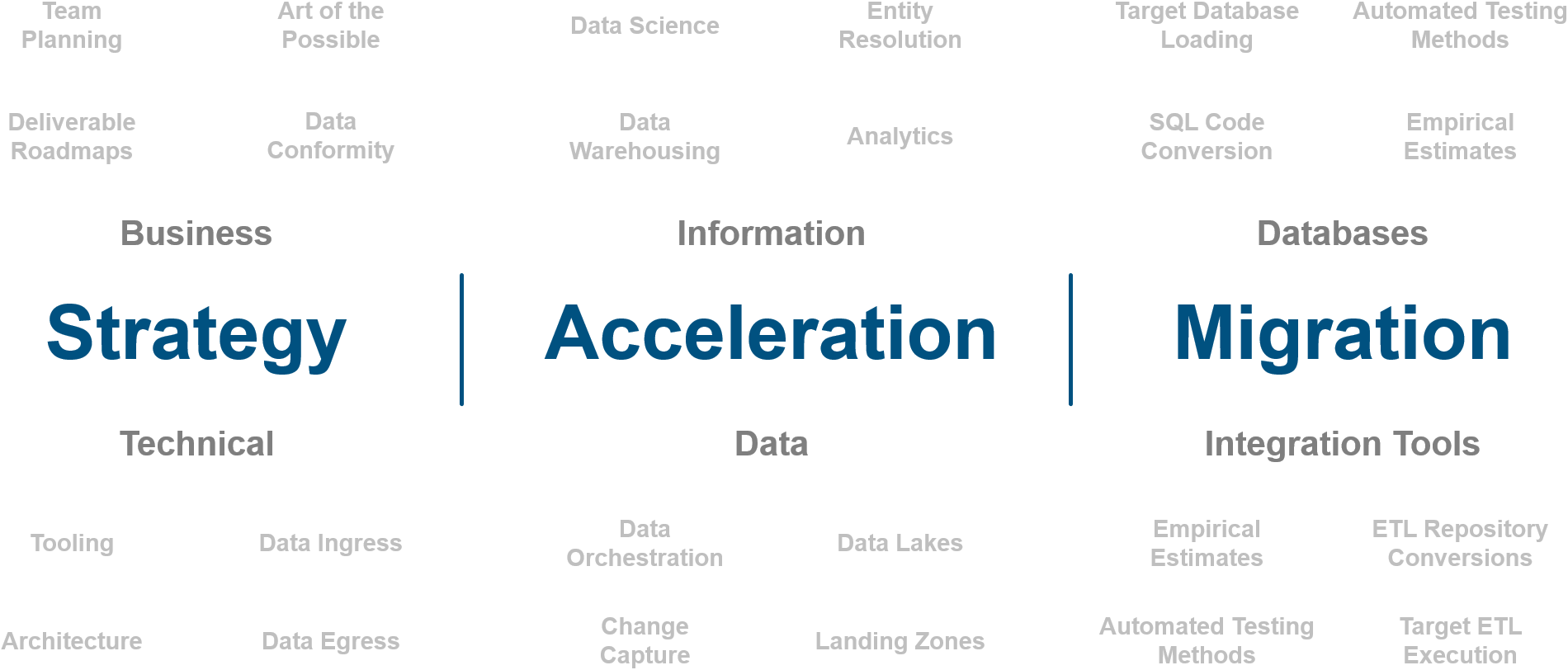
Case Study: Enterprise Data & Business Process Strategy
Written by Admin
About Customer
This customer is a nonprofit organization with nearly 100 testing facilities across the US dedicated to unbiased product testing, investigative journalism, consumer-oriented research, public education, and consumer advocacy. They are a trusted source for helping consumers make informed purchasing decisions, and have played key roles in safety recalls and related legislative reforms.
About Intricity
Intricity is a team of specialized Data Management, Data Warehousing, and Business Intelligence experts. The team members at Intricity have been handpicked over the course of 20 years, and represent the top talent globally in data-oriented disciplines.
Challenge and Wins
Challenge
This customer was seeking a modern data solution for their research, testing and insight facilities that leveraged a modern architecture/approach to centralize their data assets to drive the scalability of its distribution and use. Over the last three decades, this customer’s data processes had organically grown to a point where many processes and data silos existed separately. These data silos made it challenging to:
-
- Benefit from shared logic and user access
- Capture lower grain detail that would benefit consumers
- Catalog and optimize data assets
- Capitalize on research and data value within the organization
- Reduce the time to market for insights
- Conduct repeatable analytics
- Append and automate conditional processes based on data values
Win 1: Data Architecture Roadmap
A key deliverable of the Enterprise Data and Business Process Strategy was an overall data architecture roadmap. This high-level plan outlined the findings of the current state and recommendations for future state architecture including a specific adoption strategy to be delivered in four strategic phases.
Win 2: Business Process Management and Data Governance
In addition to building a data architecture, a Business Process Management (BPM) plan was designed to standardize the process of gathering and submitting data to the data lake. BPM technologies bring standardization to promote best practices which lead to value creation with predictability and timeliness of data, as well as completeness and validation. This delivers efficiency through decreasing cost to delivery by reducing manual data entry. This also increases effectiveness by compressing the cycle times. Ultimately this delivers agility through faster project and category onboarding.
The use of BPM also assists in developing structured data governance. By building out established pathways and processes for data to be collected, analyzed, and published, data rigor is applied.
Win 3: Move to the Cloud
In efforts to modernize their environment for a scalable future, moving to the cloud was recommended. This allows data to be stored inexpensively and where a near-limitless power for processing of analytics is available. Here, “what if” scenarios for algorithms can be evaluated on demand. Additionally, by being in the cloud, data can be prepared for data sharing opportunities with partners.
Win 4: Secure once and secure for all
Establishing a data-driven Role-Based Access Control (RBAC) security data architecture ensures that all sources that pull data from Snowflake are vetted and validated at runtime by user and role. Doing this ensures that no security business logic is required in the BI layer now or into the future.
Who is Intricity?
Intricity is a specialized selection of over 100 Data Management Professionals, with offices located across the USA and Headquarters in New York City. Our team of experts has implemented in a variety of Industries including, Healthcare, Insurance, Manufacturing, Financial Services, Media, Pharmaceutical, Retail, and others. Intricity is uniquely positioned as a partner to the business that deeply understands what makes the data tick. This joint knowledge and acumen has positioned Intricity to beat out its Big 4 competitors time and time again. Intricity’s area of expertise spans the entirety of the information lifecycle. This means when you’re problem involves data; Intricity will be a trusted partner. Intricity's services cover a broad range of data-to-information engineering needs:
What Makes Intricity Different?
While Intricity conducts highly intricate and complex data management projects, Intricity is first a foremost a Business User Centric consulting company. Our internal slogan is to Simplify Complexity. This means that we take complex data management challenges and not only make them understandable to the business but also make them easier to operate. Intricity does this through using tools and techniques that are familiar to business people but adapted for IT content.
Thought Leadership
Intricity authors a highly sought after Data Management Video Series targeted towards Business Stakeholders at https://www.intricity.com/videos. These videos are used in universities across the world. Here is a small set of universities leveraging Intricity’s videos as a teaching tool:

Talk With a Specialist
If you would like to talk with an Intricity Specialist about your particular scenario, don’t hesitate to reach out to us. You can write us an email: specialist@intricity.com
(C) 2023 by Intricity, LLC
This content is the sole property of Intricity LLC. No reproduction can be made without Intricity's explicit consent.
Intricity, LLC. 244 Fifth Avenue Suite 2026 New York, NY 10001
Phone: 212.461.1100 • Fax: 212.461.1110 • Website: www.intricity.com

